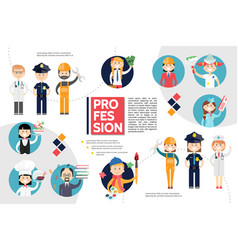Examine The Duty Of Seasonal Factors In The Success Of Industrial Outside Paint And Uncover The Very Best Times To Protect Lasting Results For Your Project
Examine The Duty Of Seasonal Factors In The Success Of Industrial Outside Paint And Uncover The Very Best Times To Protect Lasting Results For Your Project
Blog Article
Created By-McLamb Urquhart
When you're preparing a commercial external painting task, seasonal variables can make or damage your outcomes. You'll intend to think about just how temperature level and moisture effect paint application and drying times. Choosing the best season can ensure your paint sticks appropriately and lasts longer. However which periods are truly the most effective for this type of work? Let's explore the crucial elements that can impact your task's success.
The Impact of Temperature Level on Paint Application
When you're preparing a commercial outside painting job, the temperature level can considerably affect exactly how well the paint adheres and dries.
Ideally, you intend to repaint when temperatures range between 50 ° F and 85 ° F. If have a peek at this site 's as well cool, the paint might not heal appropriately, leading to problems like peeling or breaking.
On the other hand, if it's too warm, the paint can dry too quickly, preventing proper bond and resulting in an irregular coating.
You should also consider the time of day; early morning or late afternoon uses cooler temperatures, which can be more desirable.
Always examine the manufacturer's suggestions for the certain paint you're making use of, as they usually provide advice on the perfect temperature level range for ideal outcomes.
Humidity and Its Effect on Drying Times
Temperature isn't the only environmental factor that affects your business external paint job; moisture plays a considerable duty too. High humidity levels can decrease drying times considerably, impacting the total quality of your paint job.
When the air is filled with wetness, the paint takes longer to treat, which can result in problems like poor adhesion and a higher risk of mildew development. If you're repainting on a particularly moist day, be prepared for prolonged delay times in between coats.
It's important to check neighborhood weather and strategy appropriately. Ideally, aim for moisture levels in between 40% and 70% for optimal drying.
Keeping these factors in mind guarantees your task stays on track and provides a long lasting surface.
Best Seasons for Commercial Exterior Painting Projects
What's the most effective season for your business exterior paint projects?
Spring and early autumn are usually your best choices. Throughout these seasons, temperatures are light, and humidity levels are frequently lower, producing ideal conditions for paint application and drying.
Stay clear of summertime's intense heat, which can create paint to dry too promptly, causing bad adhesion and surface. In a similar way, winter's cold temperature levels can impede correct drying and curing, risking the long life of your paint task.
Go for days with temperatures between 50 ° F and 85 ° F for ideal outcomes. Keep in mind to examine the neighborhood weather report for rainfall, as damp problems can ruin your task.
Planning around these variables ensures your painting task runs smoothly and lasts much longer.
Verdict
Finally, intending your commercial external paint jobs around seasonal factors to consider can make a substantial distinction in the end result. By scheduling job during the excellent temperature levels and humidity degrees, you'll guarantee much better bond and drying times. Bear in mind to watch on regional weather prediction and pick the right time of year-- spring and very early fall are your best bets. Taking https://www.consumerreports.org/cro/news/2015/03/when-painting-a-room-don-t-neglect-the-closet/index.htm will aid you accomplish a sturdy and expert surface that lasts.
